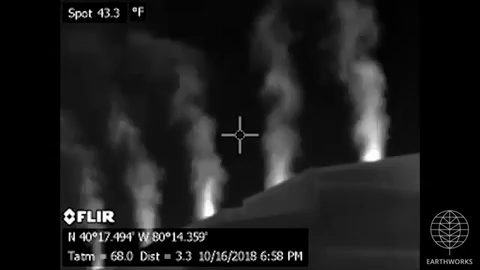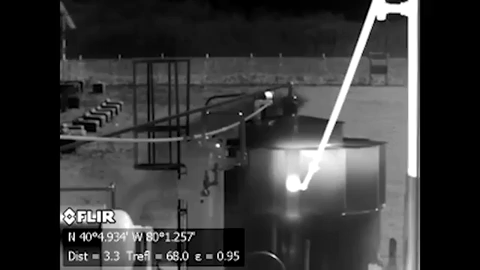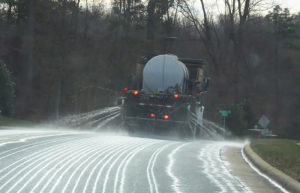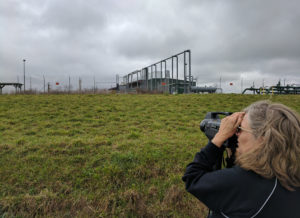Written with support from Nadia Steinzor, Earthworks’ Community Empowerment Project Manager.
The news on potential health impacts from the shale gas boom is coming out of Pennsylvania at a rapid pace—right alongside the rapid pace of drilling. The trend of unceasing growth of this industry is abundantly apparent in Washington County, the county with the most shale gas production in PA and the center of an emerging controversy over rare childhood cancers. As a Canonsburg resident, it’s also where I sit as I write this blog.
The controversy centers, in part, on whether the unusually high number of Ewing’s Sarcoma cases in Washington and three surrounding counties constitutes a “cancer cluster.” For those of us living in this region, the controversy includes the investigation of potential environmental causes of these heartbreaking diagnoses and young deaths.
A few weeks ago, the PA Department of Health (DOH) issued a statistical analysis that concluded the “incidence rates for the Ewing’s family of tumors and childhood cancers in Washington County and Canon-McMillan School District were not consistently and statistically significantly higher than expected.” However, locals point out that the data set used by the DOH is missing half of the six known cases in the school district. If, how, and when the DOH will incorporate these cases remains unclear. But whether they will make the effort needed to isolate possible causes is a far bigger question.
Several sources of toxics occupy our small school district and confound the picture. A uranium tailings brownfield site rests just blocks upstream from the school’s creekside sports field, for example. Another possible concern is the sewage treatment plant accepting and treating leachate from landfills holding toxic and potentially radioactive drill cuttings, which also releases waste into the Chartiers Creek. Over 3,800 wells and compressor stations, 64 gas processors, and other oil & gas facilities can be found within Washington County, all of which could be potential sources of air and water pollution.
Local parents and health researchers have been explicit—they want to be sure that the investigation of environmental causes includes the shale industry, and many are demanding a halt to new gas facilities in the impacted communities until such an investigation is complete. They point out that the cancer cases have all occurred in the years since the shale gas boom began in southwestern PA, and that concerning patterns of rare cancers are also emerging in the surrounding counties with heavy oil and gas development.
The DOH has yet to commit to this kind of investigation and they, the DEP, and Governor Wolf remain silent on the public call for a moratorium on new oil and gas permits in the community.
Using industry-standard tools, Earthworks has investigated over 30 oil and gas sites in Washington County over the past four years. We document visual evidence of the air pollution these facilities are allowed to emit, along with cases of unpermitted leaks. We work closely with front-line residents, who experience daily life downwind of well pads, compressors, and other facilities, including in all too many cases skin rashes, nose bleeds, and respiratory symptoms that appear to coincide with oil and gas air pollution.



Examples of the air pollution at oil and gas sites in Washington County. Residents near these and many other facilities report health symptoms consistent with the health research on harms from such exposures.
The scientific community has confirmed—via hundreds of peer reviewed studies—a multitude of health risks from exposures to the industry’s pollution. The most recent research, commissioned by Colorado regulators, recently confirmed that drilling near that state’s schools and homes is having a negative health impact.
Some, like the Pennsylvania Medical Society, consider these known threats worthy of a moratorium on all new drilling.
Even though the exact cause of the Ewing’s Sarcoma cases remains unknown for the time being, the substantial body of evidence on the human and environmental harms of oil and gas development is cause enough to hasten the end of this industry’s domination of our state. While the research on whether these exposures are associated with cancers is still scant, we do know that the gas industry saddles Pennsylvanians with an estimated $1.5 billion dollars in social and environmental costs per year. Moreover, cleaner and safer forms of power are available to us, and would be made far more accessible to the general public if incentivized by the state.
For all these reasons, the DOH should commit to a thorough investigation of possible environmental causes for these and other cancer cases—including shale gas industry pollution. Meanwhile, DEP should promptly shift away from issuing ever-larger numbers of permits for more drilling. DEP’s focus belongs instead on effective oversight of the massive oil and gas infrastructure already polluting air and water and unquestionably harming Pennsylvanians.
See more videos of Pennsylvania’s oil and gas industry air pollution.




